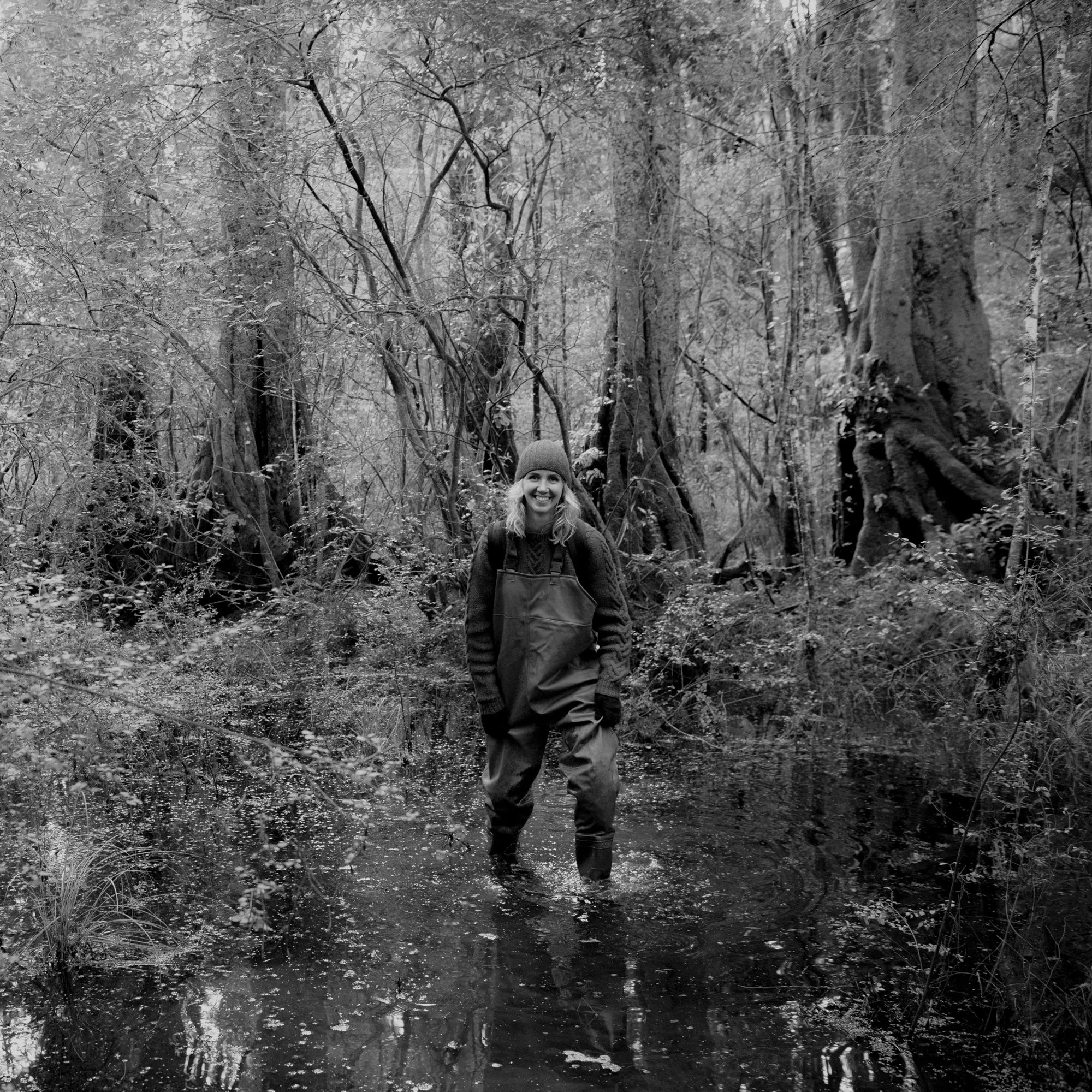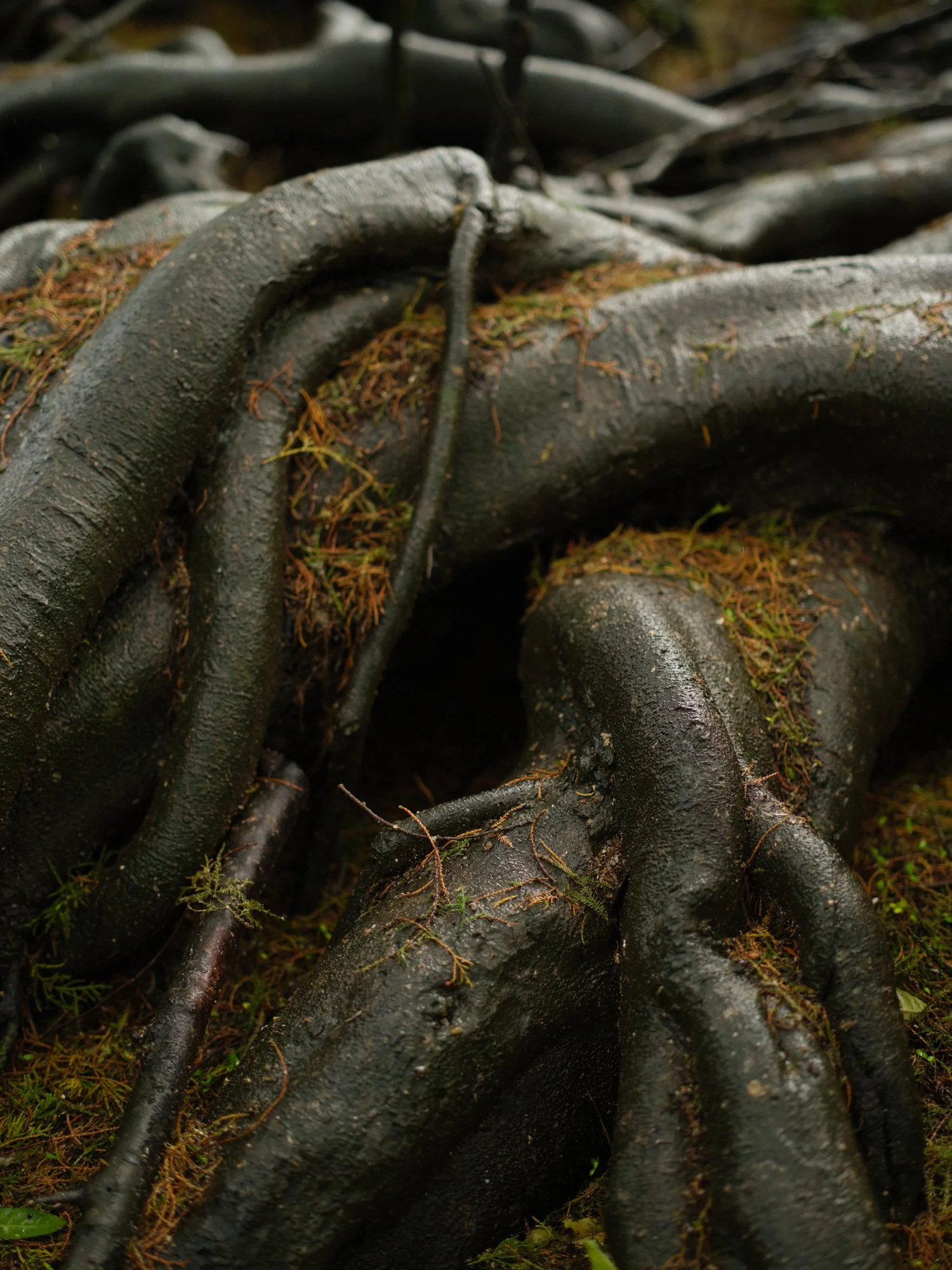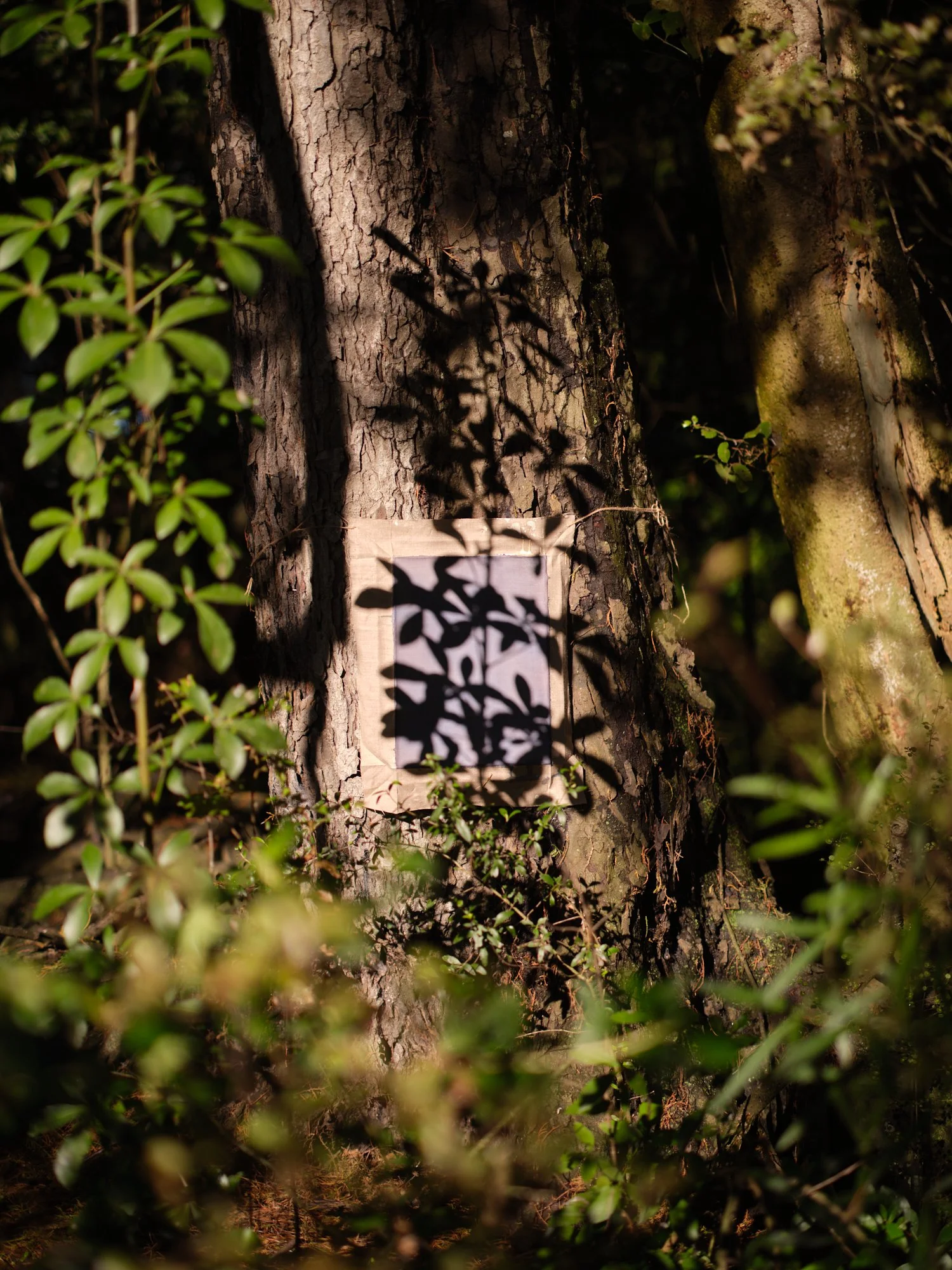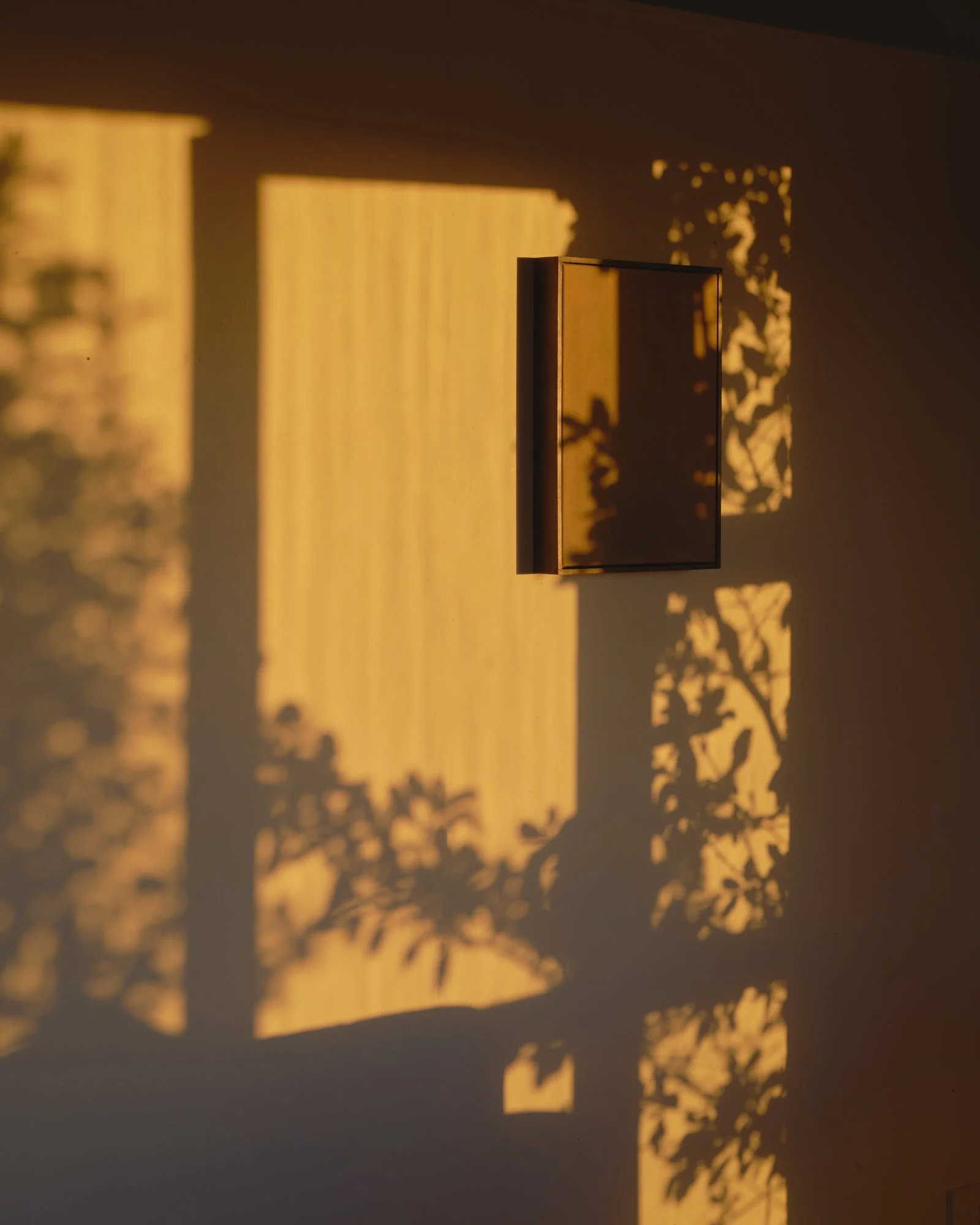Artist Kate van der Drift on camera-less’ photographs, ecological focus and her new series at Sanderson
Award-Winning Photographer Kate van der Drift presents In the Presence of Absence at Sanderson. Renowned for her expansive 'river exposures,' Kate continues her camera-less photographic investigations in a captivating new series, collaborating harmoniously with nature, she utilizes materials specific to each site. "In the Presence of Absence" is inspired by the rich, fluid landscapes of Waikato's peat lakes, renowned for their ecological diversity and historical importance. Van der Drift's artworks serve as contemporary 'nature writings,' employing cyanotype techniques infused with the tannin-rich waters of the lakes. Through these layered compositions, she intricately captures the essence of this distinctive environment.
We talked about her work, inspirations and more below.
When do you feel most alive in your work?
My senses are most heightened when I’m outside. I’m drawn to making work in wetlands because they are so alive; they are surprising and unusual environments—marginal, messy: dressed in greens and greys, sometimes noisy with birdsong. I feel particularly alive when it’s simultaneously raining and sunny in these places.
You are known for your ‘camera-less’ photographs. Can you explain this process and why you work in this way?
Within my cameraless work, there is direct interaction between a photosensitive surface and the world. Photographers have desired for nature to ‘imprint’ itself since the origin of photographic conception. In the Victorian period Talbot created indexical prints of leaves and Anna Atkins created cyanotype plant studies.
I termed my first cameraless photographs ‘river exposures’ because they were made by submerging unexposed large format sheet film and Super 8 in waterways. The directness and immediacy of this process allows for agency of the more-than-human with minimal intervention by me. The traces left on the film are recordings, drawings, or writings by the river. It’s the chemistry and life of the water interacting with the chemistry of the emulsion that creates the magic.
What is at the core of your practice?
In my research practice, I've explored making indexical photographs, video and sound, as well as Super 8 film, before turning to the latest cameraless images.
There is a statement that I wrote a few years ago that I regularly return to: “by writing-with and making-with more-than-human nature, I am also becoming-with.” At the core of my practice is a reflection on what can be done to help repair or dissolve separations within our minds and physically between us and our environments.
The river exposures were provoked by a certain discomfort I have been carrying regarding lens-based landscape photography and the loaded colonial tradition inherent in this genre. It’s not to say that I won’t use a camera again; I just decided I needed to be thoughtful with how it was used.
The new series at Sanderson features works made using cyanotypes. What does this technique bring to the works that are different from your previous ‘camera-less’ photographs?
These works have been made by coating linen and cotton canvas with cyanotype emulsion, which are then exposed to the light within remnants of the Kahikatea forest in the Waikato. I’ve collected tannin-rich water from the nearby peat lakes. Back in the studio, the cyanotypes are ‘fixed’ by washing in water and then soaking them in the tannin-staining lake water for extended periods. This process, sometimes called ‘eco-toning,’ converts the distinctive Prussian blue tones to ochres, browns, and blacks. Unlike the river exposures, these images are direct imprints as there is no translation from film. The resulting photograph is a raw, earthly representation on canvas.
Your works often have an ecological focus. This exhibition in particular focuses on Peat bogs in the Waikato – what drew you to these unique ecosystems?
My fascination with peat bogs in the Waikato stems from their unique ecological significance, shaped over millennia by the accumulation of decomposing organic matter in wet conditions. These landscapes serve as crucial carbon sinks, storing immense amounts of carbon and playing a vital role in our global ecosystem. When drained, these important carbon sinks turn into significant carbon polluters. When peat dries, it shrinks, causing peatlands to oxidise and subside.
There are 31 peat lakes left in the Waikato, but they are mostly surrounded by farmland and in terrible condition. I believe we are simply not doing enough work to care for, protect, and preserve important ecosystems such as these. The loss in these places is palpable.
I spent some of my childhood on dairy farms near these peat lakes in the Waipā region. My father was a sharemilker, and these lands feel familiar. I’ve just returned to live in the Waikato district for the first time since I left after high school in 2002.
You refer to the environments you photograph as ‘collaborators,’ can you explain this?
I believe nature (the more-than-human) has agency and a voice. The relationship that I’m wanting to foster is that of reciprocity between the more-than-human nature and us. Aiming to engage in collaboration with matter and place in an ethical and non-hierarchical way involves respecting the intrinsic value of nature and recognising that it has its own creativity and originality. This approach seeks to avoid imposing human-centric narratives or representations onto natural entities. I suggest that there is space for more mutual communication and understanding between us. By recognising nature as a collaborator and seeking to amplify its voice so it’s heard more fully.
Where is home at the moment? Can you share your favourite spots to relax and recharge?
I mostly live in Whāingaroa Raglan but spend a lot of time in Tāmaki Makaurau Auckland when I work as a commissioned photographer. Whāingaroa is recharging in its spirit. When I arrive home from work trips away, I feel as though my heart can relax. It’s incredibly beautiful. I can see the sea from my rented house as well as my work studio. On 2-3ft days, I’ll be out at Manu Bay on a longboard at sunrise with my gal pals. It’s a wonderful experience watching the light change while being surrounded by friends in the ocean. During the day, I work from a shared studio with a Puriri tree and bush at the front door and a Kahikatea and harbour views at the back. We get plenty of chirpy visitors.
What is one thing that people might not know about you?
The other watery activity in my life that many don’t know I do, is freediving! It’s mostly oceanic sightseeing for me, but I do usually take a speargun. I love the sensation of a slowed heart rate prior to taking a deep breath. It’s very quiet and often dark and otherworldly. I love swimming among fish, exploring under rocks and in seaweed, and watching the curious and often large bronze whalers glide past, checking to see if I’ve caught anything for their lunch.
Interview: Zeenat Wilkinson
Images: Supplied









